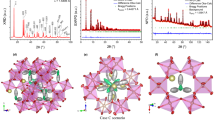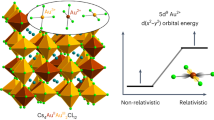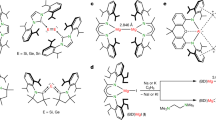Abstract
As a preliminary to the structural determination of chromous acetate, it was decided to study the much more stable cupric acetate Cu(CH3COO)2.H2O during the early X-ray investigations. Both these compounds are monoclinic with space group (C2/c, and their unit-cell dimensions, determined from X-ray measurements and given herewith, are almost identical. 
This is a preview of subscription content, access via your institution
Access options
Subscribe to this journal
Receive 51 print issues and online access
$199.00 per year
only $3.90 per issue
Buy this article
- Purchase on Springer Link
- Instant access to full article PDF
Prices may be subject to local taxes which are calculated during checkout
Similar content being viewed by others
References
Tunell, G., Posnjak, E., and Ksanda, C. J., Z. Krist., A, 90, 120 (1935).
van Niekerk, J. N., and Schoening, F. R. L., Acta Cryst., 4, 35 (1951); 5, 499 (1952).
Werner, A., Ann. Chem., 375, 1 et seq. (1910).
Author information
Authors and Affiliations
Rights and permissions
About this article
Cite this article
VAN NIEKERK, J., SCHOENING, F. X-Ray Evidence for Metal-to-Metal Bonds in Cupric and Chromous Acetate. Nature 171, 36–37 (1953). https://doi.org/10.1038/171036a0
Issue Date:
DOI: https://doi.org/10.1038/171036a0
This article is cited by
-
Ab initio molecular dynamics free energy study of enhanced copper (II) dimerization on mineral surfaces
Communications Chemistry (2022)
-
Contrast in Terahertz Images of Archival Documents—Part I: Influence of the Optical Parameters from the Ink and Support
Journal of Infrared, Millimeter, and Terahertz Waves (2017)
-
Complexes of cobalt(II) arylcarboxylates with 2,4-dimethylpyridine
Transition Metal Chemistry (1983)
-
Binuclear Carbonato-complex of Chromium (II)
Nature (1967)
-
Nature of Cupric Alkanoate Solutions
Nature (1960)
Comments
By submitting a comment you agree to abide by our Terms and Community Guidelines. If you find something abusive or that does not comply with our terms or guidelines please flag it as inappropriate.



